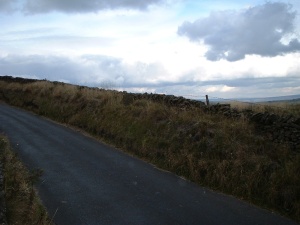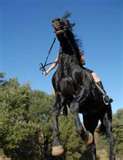A haunted road and a suit of gold armour.
The following account was published in the Leek Post and Times many years ago and is as follows: It is said that the re is “something” in the road just beyond Little Birchall. Horses won’t always pass it at night, for they can see what the human eye cannot; and it is by the stopping and scaring of horses that the “something”has made itself felt.
re is “something” in the road just beyond Little Birchall. Horses won’t always pass it at night, for they can see what the human eye cannot; and it is by the stopping and scaring of horses that the “something”has made itself felt.
How old this legend is, one may, perhaps guess. But our forefathers, though they told the tales of the moorlands to each other from age to age, never put their hands to writing if they could h elp it. The legend of the “something” on the Cheddleton road may be centuries old.
elp it. The legend of the “something” on the Cheddleton road may be centuries old.
Let us go and see if we can find anything which we can notice just beyond “Little Birchall”. Sure enough in the hedge on the right hand side of the road is the fluted shaft of an old cross.
Was it part of Cornhill Cross that stood on the hill near the cemetery? Or did it come from Cheddleton? There is one in Cheddleton graveyard very like this fragment. But there are ancient associations much nearer Little Birchall. This stone is said to be the spot where country farmers met Leek buyers in the time of the plague. Here they did their market traffic outside the town. But the associations of the place are much older than the time of the plague. About 100 yards away from this cross, and in the field behind it, there stood until 35 years ago alarge mound of earth about four feet in height and forty yards in circumference. The tradition was that it was made of stones carried on human shoulders from Little Birchall stone pit.
“Lets see whats in that lump”, said Mr Leech the Land Agent. “We can do that Mester”, was the reply; and quickly the picks and spades set to work. True enough the mound was made of stones- scores and scores of loads. But in the middle was a grave, edged, ended and cornered with larger stones. In this grave was a heap of charred bones, and a pot of brown earthenware. The on either side, another similar grave was found containing also burnt human bones – three graves in all and two sepulchral urns. The urns were taken away and one of them broke accidentally, and the other was sent into Herefordshire. The bones were also removed and the mound was leveled.
Now what were these graves? Remember local legend tells us two things. The spot is fearful to horses going towards Cheddleton and the stones were brought by men and heaped up till the mound was made. Not long ago there was a mound in Flintshire, local legend said that a warrior in golden armour haunted it. Then the mound was examined. It was large and made of loose stones. A burial had taken place in it. The bones were there, and amongst them the remains of golden armour. The country folk could never forget the golden armour buried there, though they forgot the body that wore it lay within. The legend turned the burial into a ghost, but was right about the golden armour.
Now then, turn to our Birchall tale. Three bodies lay side by side. Men brought stones and covered them. Horses won’t pass the place. A fragment of a cross marks it on the road. Here then we gather, three warriors met some fourteen hundred years ago. There were two from Cheddleton, which was a Celtic colony, and one from the British colony at Abbey Green, or vice versa. Celt met Briton on horseback, and as it was on Ladderedge when a Stanlow of Stanlow, fought, on coming home from a fair with a neighbour, so it was on the Cheddleton road, still earlier. All three were killed, the horses fairing badly in the battle. The neighbours laid them side by side where they fell, covered them with stones, and set a cross over them, for they were, perhaps just Christians – only just both in time and temper. The horror of the battle could not be forgotten; it still clings to this spot.
No trace seems to be left in the field of the barrow in which these three interments lay. But nearer to Leek there appears to be another and much older barrow. From Mr Bermingham’s house at the top of Compton, a path leads down a steep bank into Laddymedale. Half way down the hill there is a gravel pit, and a slight examination of the spot shews that the pit has been driven through a barrow or burial mound of the oldest type. It seems clear that some 3000 years ago there was here a level spot in the slope of the hill. The body of some chieftain was there burned to ashes, laid on the ground and then covered with gravel. The layer of ashes may be seen underneath the third post from the top end of the wire fence which protects the pit. The gravel getting has eaten a big hole into the grave mound, but its shape is still discernible, and it is intersting to see the layer of ashes, to which the body was reduced, clearly marked, without the trouble of digging for it. As this barrow was half way down the hill, there was probably a still more ancient and honourable one on top of the bank
